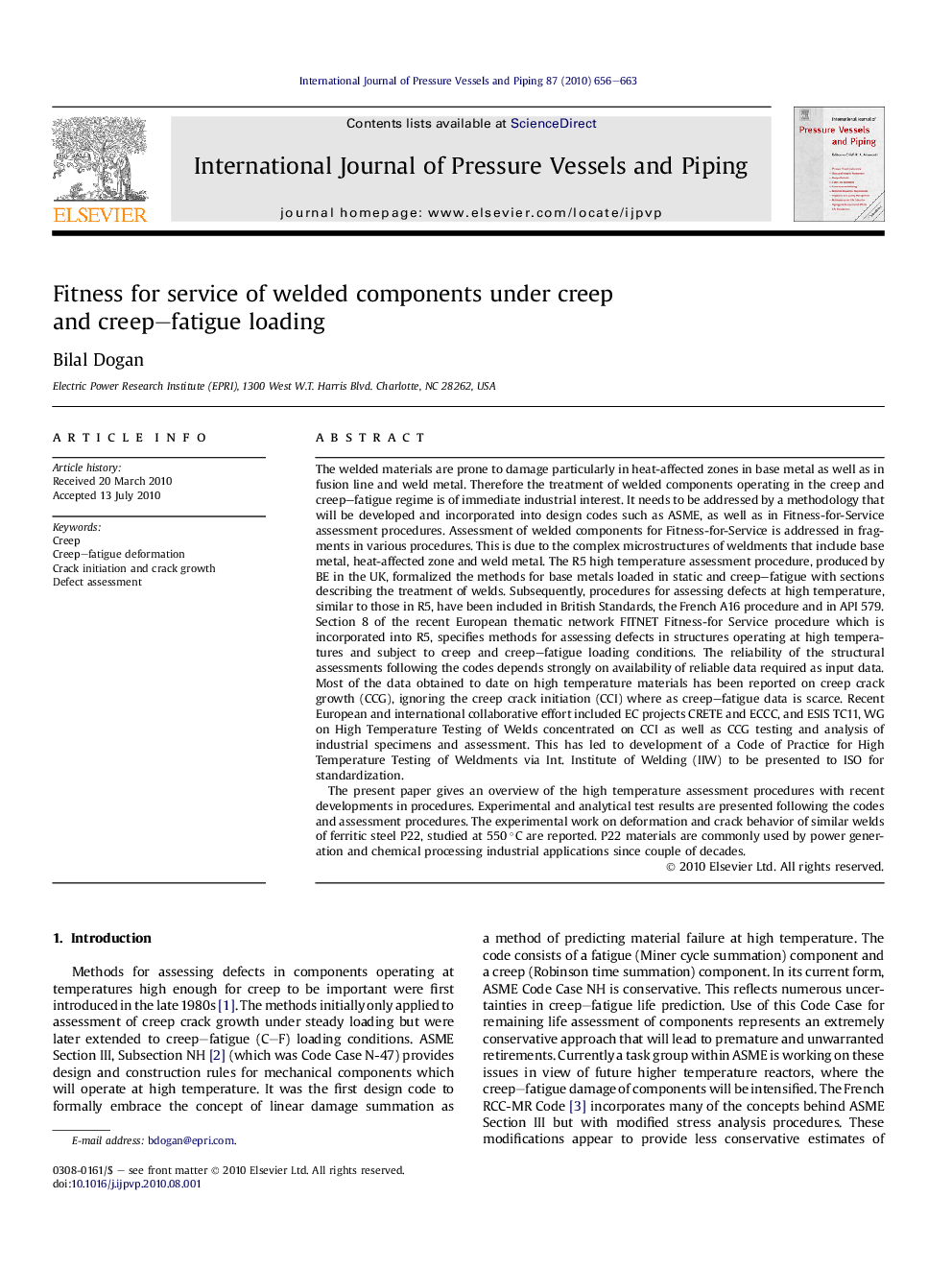| Article ID | Journal | Published Year | Pages | File Type |
|---|---|---|---|---|
| 787892 | International Journal of Pressure Vessels and Piping | 2010 | 8 Pages |
The welded materials are prone to damage particularly in heat-affected zones in base metal as well as in fusion line and weld metal. Therefore the treatment of welded components operating in the creep and creep–fatigue regime is of immediate industrial interest. It needs to be addressed by a methodology that will be developed and incorporated into design codes such as ASME, as well as in Fitness-for-Service assessment procedures. Assessment of welded components for Fitness-for-Service is addressed in fragments in various procedures. This is due to the complex microstructures of weldments that include base metal, heat-affected zone and weld metal. The R5 high temperature assessment procedure, produced by BE in the UK, formalized the methods for base metals loaded in static and creep–fatigue with sections describing the treatment of welds. Subsequently, procedures for assessing defects at high temperature, similar to those in R5, have been included in British Standards, the French A16 procedure and in API 579. Section 8 of the recent European thematic network FITNET Fitness-for Service procedure which is incorporated into R5, specifies methods for assessing defects in structures operating at high temperatures and subject to creep and creep–fatigue loading conditions. The reliability of the structural assessments following the codes depends strongly on availability of reliable data required as input data. Most of the data obtained to date on high temperature materials has been reported on creep crack growth (CCG), ignoring the creep crack initiation (CCI) where as creep–fatigue data is scarce. Recent European and international collaborative effort included EC projects CRETE and ECCC, and ESIS TC11, WG on High Temperature Testing of Welds concentrated on CCI as well as CCG testing and analysis of industrial specimens and assessment. This has led to development of a Code of Practice for High Temperature Testing of Weldments via Int. Institute of Welding (IIW) to be presented to ISO for standardization.The present paper gives an overview of the high temperature assessment procedures with recent developments in procedures. Experimental and analytical test results are presented following the codes and assessment procedures. The experimental work on deformation and crack behavior of similar welds of ferritic steel P22, studied at 550 °C are reported. P22 materials are commonly used by power generation and chemical processing industrial applications since couple of decades.
